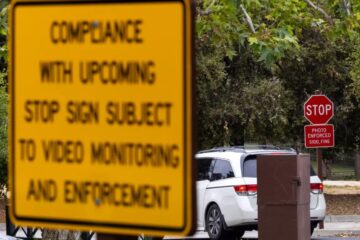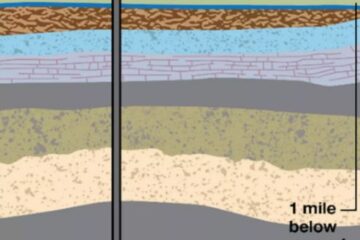California State Parks in Sorry Shape
California’s once-renowned system, a playground for nearly 80 million visitors a year, languishes as funding and maintenance fall short.
Source of this article – Los Angeles Times, January 29, 2006
By Hugo Martín, Times Staff Writer

NO MONEY FOR AMENITIES: Gary Watts of California’s Department of Parks and Recreation walks around Wildwood Canyon State Park in Yucaipa, which has no paved parking lots, no kiosks, no trail maps and no permanent staff.
Frank Sissons’ ’75 Chevy pickup growls as it bounces up a rutted dirt road to the highest peak in Wildwood Canyon State Park. From this San Bernardino County mountaintop, Sisson has a God’s-eye view of the sky-blue waters of Lake Perris to the south and the snow-white cap of Mt. Baldy to the west.
On a clear day, the retired aerospace engineer can see to the Pacific. “The view just gets bigger and bigger,” says Sissons, peering out from behind dark sunglasses.

IN DISREPAIR: This concrete bridge at Maliu Creek State Park is closed due to damage. The park’s Century Lake is being consumed by sediment, reeds and lily pads.
If it hadn’t been for Sissons’ efforts, this view would have been the exclusive property of a residential developer with plans to wedge 800 homes into these oak-studded canyons. Sissons and some fellow horse-lovers persuaded the state to buy the 850 acres, preserving it as one of only five new state parks opened in the last five years.
But three years after the state spent $4 million for the land, Wildwood Canyon languishes like an abandoned garden. There are no paved parking lots, no kiosks, no trail maps and no permanent staff. A rusty fence about a quarter-mile from the park entrance obscures the only sign for the property. State officials say there is no money for such amenities.

CATALYST: Frank Sissons, 77, and some fellow horse-lovers persuaded he state to buy the 850 acres for Wildwood Canyon.
Wildwood Canyon exemplifies the sorry state of California’s once-renowned state park system.
Voters have approved $4.7 billion in bonds in the last five years to buy such land and pay for coastal cleanup and habitat restoration. But that money is nearly gone, and the parks department has stopped buying or accepting new land unless it comes with an independent source of maintenance funds.
Existing parks, meanwhile, suffer from neglect. When budget troubles grip Sacramento, as they have repeatedly in recent years, debate focuses on ways to preserve funding for schools, roads and hospitals. The state’s 278 parks have been overlooked in most of those budget battles.
The list of overdue maintenance projects at the parks is at an all-time high, state officials say, edging toward the $1-billion mark. Gov. Arnold Schwarzenegger’s proposed budget for 2006-07 offers virtually no relief. And his long-term plan for shoring up California’s vast public works system would set aside only about $200 million for park repairs, if approved by lawmakers and voters.
Legislators are drafting a possible park bond measure for the June ballot. State Sen. Sheila Kuehl (D-Santa Monica), chairwoman of the Senate Natural Resources and Water Committee, said she suggested it include money for maintenance but was rebuffed.
“When I brought up the deferred maintenance problem, I was told it is just so much money we can’t even think about it,” she said.
California’s parklands are more than playgrounds for nearly 80 million visitors a year. They have symbolized “the good life that could be available to everyone” who lives here, said Kevin Starr, the state librarian emeritus. A large expansion program after World War II, along with the construction of a modern freeway system, helped mark California’s rise to greatness, he said.
But the longer state parks repairs are put off, the more costly they become in the end, say park advocates. Examples abound.
 Century Lake, in Malibu Creek State Park, is slowly disappearing. The seven-acre lake for anglers and picnickers, created by the damming of Malibu Creek, is being consumed by encroaching sediment, reeds and lily pads. Park rangers say restoration will cost $200,000 — or more, as mud and vegetation continue to inundate the lake.
Century Lake, in Malibu Creek State Park, is slowly disappearing. The seven-acre lake for anglers and picnickers, created by the damming of Malibu Creek, is being consumed by encroaching sediment, reeds and lily pads. Park rangers say restoration will cost $200,000 — or more, as mud and vegetation continue to inundate the lake.
La Purisima Mission near Lompoc is disintegrating. The historic state landmark, originally built in 1787 and restored after an 1812 earthquake, is being done in by a leaky roof that is slowly eating away at the old wooden structure.
Lake Perris State Recreation Area needs an overhaul. An aging telephone system used by lifeguards isn’t working, and the cellphone service is unreliable.
“There is no question that the condition of our parks is deteriorating, and deteriorating at an alarming rate,” said Elizabeth Goldstein, president of the California State Park Foundation, a nonprofit group that raises funds for the parks.
She called the state’s $906-million deferred-maintenance sum a “very large and scary number.” She cited the deteriorating roof of a 96-year-old hospital at Angel Island State Park in San Francisco Bay as an example of the problems.
“The roof is open and the rain is getting in,” she said. “Without repairs, these things begin to escalate.”
State parks spokesman Roy Stearns conceded that maintenance funding is inadequate and said parks Director Ruth Coleman is working on a solution, though he demurred when asked for details.
Schwarzenegger’s deputy director for finance, H.D. Palmer, said the governor may set aside extra money for deferred maintenance if tax rolls grow in the next few months.
“We will revisit this issue again,” Palmer said.
Wildwood Canyon is actually a series of eight or nine canyons at the base of Mt. San Gorgonio in the southeastern end of Yucaipa. Groves of coastal live oaks — some several centuries old — pack the canyon floors. In the spring, the meadows flourish with wildflowers. In the winter and fall, the fields and mesas turn strawberry blond.
Except for a few power lines and electric well pumps, the land looks much the way it did in the late 1800s and early 1900s, when ranchers raised dairy and beef cattle on the property. A weathered barn with peeling paint and a pigpen abuts the old ranch manager’s house at the base of a steep hill. Bootleggers once holed up in a nearby canyon, brewing moonshine in a homemade still.
Sissons, 77, discovered Wildwood Canyon when he moved to the area with his family in 1962. It was the perfect place where he, his wife and four kids could ride horses with permission from the ranch owner.
In the late 1980s, the ranch owner made plans to sell the land to a developer. But a brush fire and torrential rains in 1997 caused so much erosion that the deal fell through. Sissons and other riders formed the Yucaipa Valley Conservancy and began lobbying state officials to buy the property.
“We spent about 2 1/2 years beating up on people,” said Sissons, describing the lobbying process that got local cities and state lawmakers to support the purchase. In 2002, the state agreed and bought the land.
Sissons, a Korean War veteran with pale blue eyes and light gray hair, has mixed feelings about the state of Wildwood Canyon now.
At least, he said, the land is saved from development, and he doesn’t have to fight crowds to visit the park because few people outside of the neighborhood know about it.
Sissons said there are nearly 4,000 acres of open space and national forest next to Wildwood Canyon that the state could acquire to create a larger, full-service park with campgrounds, marked trails, horse stables and concessions.
But the state has declined Sissons’ proposal to expand the place, saying there is no money to develop or maintain the additional land.
“It’s a shame,” he says as he points to several new houses on the park’s southern border, a sign that development is encroaching.
Sissons muscles his pickup around a clearing and rides the brakes down the mountain. He stops at the weathered barn next to the old ranch manager’s house and suggests the barn could become a ranching museum. With some interior work, the house could be home for a state park ranger, he says, and a private concessionaire could offer horse rides from nearby stables.
Sissons has a lot of ideas for the park. Now, he says, he has to continue “beating up on people” to get the money to make it happen.
A system in disarray
Neglected state parks are in need of close to $1 billion in maintenance projects, an all-time high. Some of the overdue projects include:
San Buenaventura State Beach
Problem: Rock seawalls that stop beach erosion are disintegrating.
Cost: $10 million
Topanga State Park
Problem: The drinking water and irrigation system is leaking and deteriorating.
Cost: $1.25 million
Huntington State Beach
Problem: Lifeguard stations built in the 1970s are weather-beaten and deteriorating.
Cost: $950,000
Gaviota State Park
Problem: Invasive exotic plants have overrun the park.
Cost: $750,000
Carpinteria State Beach
Problem: Restrooms built nearly 30 years ago don’t offer handicap access.
Cost: $650,000
Will Rogers State Historic Park
Problem: Chicken Ridge bridge, built of wood and steel pipes about 25 years ago on the Backbone Trail, is weak and rusting.
Cost: $80,400
Point Mugu State Park
Problem: A failing septic tank threatens to damage restrooms and a public walkway.
Cost: $49,856
Source: California Department of Parks and Recreation


